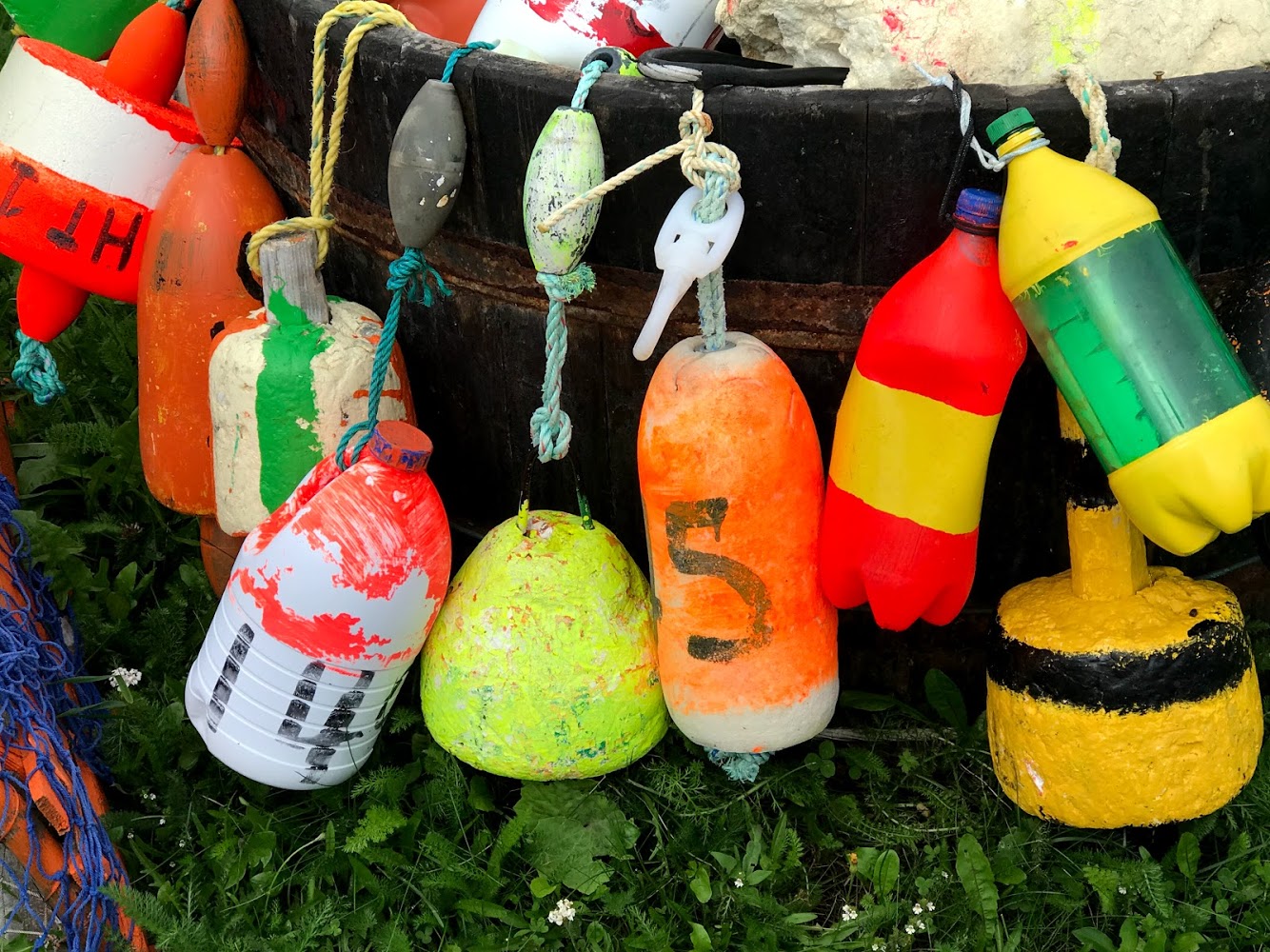
I emerged slowly from my slumber, listening…something was out of place. I listened and heard nothing. That was it. It was quiet. The wind had stopped, the surf in the bay was lapping gently at the shore. The sunrise was peeping through the blinds. It was a lovely day for our drive north to Pistolet Bay Provincial Park, and use that as our base to explore the northern tip of Newfoundland.


We left Port at Choix and continued north, the road taking us through Gros Morne National Park.

Unfortunately, Susan’s back condition has deteriorated and I didn’t want her to risk hiking the trails. I inserted a stock image to show you its majestic 2000ft cliffs carved out by glaciers.

We followed the coast through fishing hamlets, the houses randomly scattered with narrow roads winding their way down to a main street along the waterfront. The striking absence of trees, flower gardens and fences suddenly dawned on us. When children play outside, they must range across the whole village, with all parents keeping a watchful eye on them lest they get up to mischief.

We continued north, and noticed the smaller lighthouses, now fully automated, have changed the way of life for their keepers. No longer required, they have abandoned the homes, left them frozen in time, and slowly succumbing to the harsh climate.

The road continued north, eventually leaving the coast, and headed inland through a peat bog. The power companies have to anchor the power poles with wooden frames weighted down with rocks in the spongy wet ground.

Walking off the road, one immediately feels how spongy the ground is. Peat forms when plant material does not fully decay in acidic and anaerobic conditions. It is composed mainly of wetland vegetation: principally bog plants including mosses, sedges, and shrubs. As it accumulates, the peat holds water.
We pushed north on the Viking Trail into Vinland, and arrived at our campground, Pistolet Bay Provincial Park, for the next two nights.

The campground was well laid out, with good sites carved out from trees stunted by harsh winters.

We parked the trailer in our designated site, and headed out to explore L’Ans aux Meadows. Dating to around the year 1000, L’Anse aux Meadows is widely accepted as evidence of pre-Columbian trans-oceanic contact. It is notable for being the only confirmed Norse site on mainland North America, its possible connection with Leif Erikson, and with the Norse exploration of North America.

Leaving Greenland, and following favourable winds, the trip took 9 days through open seas in wooden boats with low gunnels. The conditions must have been wet and miserable, yet they braved the conditions, and made the journey in search of resources, making a base at L’Anse Au Meadows.



All that remains today, are regular mounds in the earth where the thick peat walls once stood. They outlined all of the buildings in the settlement, and were professional excavated and mapped.

We visited a reconstructed house, and were amazed at the simple yet very effective structure of the houses. Peat was cut from the bog, air dried, and stacked like bricks to form walls between 4ft and 6ft thick and high, with a layer of sod on the wooden roof for insulation.


It felt like an autumn day when we visited the site, a cold damp wind blowing off the cruel grey ocean. Once we entered the shelter of the building, we immediately felt it’s inviting warmth and safety. We were reluctant to leave.

From the historic archeological site of L’Anse Meadows, we visited Norstead. It’s a village and trading post where you can step back in time to a Viking Era and immerse yourself in the sights, sounds, and scents of a Norse village.



We left the Norse villages and continued exploring the small harbours and driving to the end of the roads. During one of these side trips, we came across a hut where a woman was selling home made goods. She shared her local knowledge with us, and we bought a few jars of berry jam and jelly we had never heard of before.
We headed back to our campsite for the night, and the next morning we were up early, eager to take a side trip and explore the town of St. Anthony.
The history of European settlement of St. Anthony reaches back to the early 16th century, when French and Basque fishermen used the well-sheltered harbour as a seasonal fishing station.

More people began arriving in the mid-19th century. By 1857, a census found 71 inhabitants in 10 families. By 1874, the population rose to 110, and by 1891, it was 139.
The town grew in population after the arrival of Dr. Wilfred Grenfell in 1900, who became St. Anthony’s most influential historic figure.
We visited the Grenfell Museum and Grenfell House. He was a fascinating individual who made a lifelong contribution to society through medicine, education, religion and law.

During our trip to St. Anthony, we met Doug in the Grenfell Museum parking lot. Doug is in his fourth year of solo travelling in his amazing overland vehicle.


We met Doug again when we stopped at the Lightkeepers Cafe for lunch. We had a fantastic meal while chatting with him, and two other motorcyclists from Victoria BC.

That’s what I love about our adventure, we meet fascinating people sharing a common goal – to explore, live life, and learn from others.
We returned to our base camp. After supper, we turned in early for the night in preparation for our next long driving day. The weather forecast called for heavy rain.
